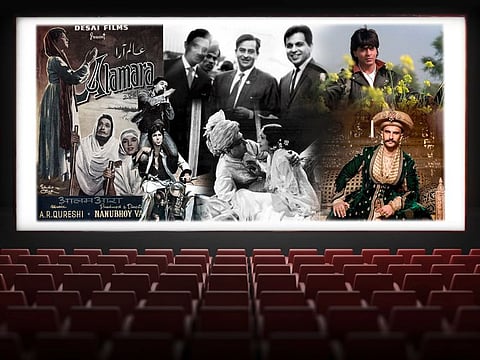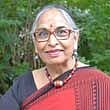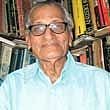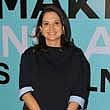Jolly good, this Bollywood!
A look at the evolution of film production and moviemaking in the Hindi film industry

If you wish to understand Hindi cinema in-depth, be sure to visit the National Museum of Indian Cinema in Mumbai.
The institution, in India’s film capital, pays homage to the nation’s enduring love affair with movies. Gulshan Mahal, an elegant 19th century bungalow on Peddar Road, is an ideal space in which you can browse through the trajectory that Hindi cinema, nay Indian cinema, has taken since Lumiere Brothers first showcased six films to an awestruck audience at the city’s plush Watson Hotel on July 7, 1896, or study the evolution of Indian cinema since Dadasaheb Phalke made India’s first silent movie, Raja Harishchandra in 1913.
One of the sections traces the origins of cinema with animation devices such as zoetrope and praxinoscope, and statues of film pioneers, Auguste and Louis Lumière standing next to their cinématographe. In one of the rooms, Raja Harishchandra plays on loop. There is extensive literature on trailblazers such as Phalke and producer-director Baburao Painter, as well as early movies such as Kaliya Mardan. There are sections dedicated to India’s first talkie, the 1931 classic Alam Ara, directed by Ardeshir Irani.
“The film museum is a repository of India’s history. But it also tells the story of how Indian cinema evolved from the silent era to talkies, from 70s musicals to the 80s and 90s action cinema, from art wave cinema to multiplex movies,” says film historian Maithili Rao. “You cannot understand the evolution without understanding the film studios, which once ruled Hindi cinema and were more powerful than the stars.”
The studio system
The 1930s heralded the arrival of big studios for the industry — Kohinoor films, Prabhat Talkies, Bombay Talkies and New Theatres, to name a few, and with screen talents such as Ashok Kumar and Devika Rani on their payrolls.
In 1939, producer-director Kamal Amrohi, famous for films like Pakeezah, scripted Pukar, a larger-than-life movie with spectacular sets. “Since then, several technological transformations changed cinema,” says revivalist, founder of Film Heritage Foundation of India, and chronicler Shivendra Dungarpur.
You cannot understand the evolution without understanding the film studios, which once ruled Hindi cinema and were more powerful than the stars.

Producers such as PC Barua introduced new light techniques in Hindi cinemas, besides popular tropes such as flashback scenes. Apradhi, directed by Debaki Bose, was the first film shot using artificial lighting.
“The Raj Kapoor-Dev Anand-Dilip Kumar trio marked the debut of the star system in Hindi cinema,” says film historian Virchand Dharamsey, who, at 87 years of age, has been witness to the evolution. “Although Ashok Kumar could arguably be labelled as India’s first superstar, the arrival of Dev, Dilip and Raj saw the star system getting firmly established in Hindi cinema.”
Although Ashok Kumar could arguably be labelled as India’s first superstar, the arrival of Dev, Dilip and Raj saw the star system getting firmly established in Hindi cinema.

It is a system that has given Bollywood countless stars since, from Rajesh Khanna, Amitabh Bachchan and Rishi Kapoor, to three Khans – Shahrukh, Aamir and Salman, as well as Ranveer Singh and Ranbeer Kapoor today.
Rise of the female lead
In the 1940s, social mores deterred women from entering the industry, forcing men to play women’s roles. “If you watch the 1943 movie, Ram Rajya, you will see a man playing the role of Sita, and men played other female characters too,” says Rao. “For years, men played women characters on screen.”
Actresses now carry a movie on their own steam, a world away from the early days when men played women’s roles.

Indian cinema’s first actress, Durgabai Kamat was a Marathi theatre actress. Divorced from her husband Anand Nanoskar, a history teacher at the JJ School of Arts in Mumbai, she became an actress to earn enough to raise her daughter.
Some women, though still managed to make credible impact in the early days. “Movies featuring the adventures of Fearless Nadia were famous. We had actresses such as Jaddan Bai, mother of famed Indian actress Nargis, Nadira, Devika Rani, and then the later actresses – Waheeda Rehman, Vaijyanthi Mala and Meena Kumari, to the era of Sharmila Tagore, Hema Malini and Rekha, arthouse stalwarts, Shabana Azmi, Deepti Naval and the late Smita Patil, to today’s actresses such as Aishwarya Rai and Deepika Padukone. The roster is star-studded,” says Dungarpur. “Actresses now carry a movie on their own steam, a world away from the early days when men played women’s roles.”
Genres and directors
Over the years, Hindi cinema has witnessed the rise and fall of several genres, many defined by the directors who helmed the movies. Says Rao, “If the 1930s and 40s were all about mythology, the 1950s saw social dramas and topics on societal change in a newly independent India abound. The 1960s were given to the angst of Guru Dutt’s dark cinema, while the latter part of the decade saw the emergence of Rajesh Khanna, whose romantic cinema defined the era. In the mid-1970s, the angry young man came to the fore, reflecting the social divide brought on by disparity between rich and poor in India, and immortalised in Indian cinema through the burning intensity of Amitabh Bachchan.”
Movies starring Bachchan also saw the rise of directors such as Manmohan Desai, with formula fare popularising separated-at-birth storylines, and writer duo Salim-Javed, who commanded as much money and respect as the stars and directors.
“This was also the era of blockbuster movies like Sholay.”
Several other genres bloomed in between – the Muslim social drama of the 1950s and 60s, which were “conservative, poetic and chaste romances” says film critic Anupama Chopra. The lyrical beauty of everyday situations is caught beautifully by director Hrishikesh Mukherjee and his captivating characters that inhabit a middle-class, urban, educated milieu. Amol Palekar defined the genre by effortlessly playing the quintessential common man with a touch of wit in movies such as Gol Maal, Chotti Si Baat and Baton Baton Mein.
“Parallel cinema was a film movement that began in West Bengal, with directors such as Satyajit Ray and Ritwik Ghatak, before spreading to Mumbai. The flagbearers in Hindi cinema were directors Mrinal Sen, Shyam Benegal, Sai Paranjpe, Basu Chatterjee and Kundan Shah, whose approach gave us iconic movies like Jaane Bhi Do Yaaro and Mirch Masala. It also sparked the emergence of the parallel movie stars such as Om Puri, Naseeruddin Shah, Shabana Azmi, Farooq Sheikh and Deepti Naval,” says Rao.
Emergence of multiplexes
As the three Khans held sway through the 1990s, multiplexes also gained favour, defined by the success of Farhan Akhtar-directed Dil Chahta Hai.
“From perfectly dressed and coiffed actors to relatable characters with witty quips for dialogues, people you would meet in the urban milieu, these movies had everything younger audiences could relate to,” says Chopra.
Dil Chahta Hai sparked a wave of multiplex cinema releases, such as Dev D and Ranjhana. NRI-inspired cinema from Aditya Chopra and Karan Johar also became popular, of which the best was Dilwale Dulhaniya Le Jayenge and Kuch Kuch Hota Hai, says Rao.
From perfectly dressed and coiffed actors to relatable characters with witty quips for dialogues, people you would meet in the urban milieu, these movies had everything younger audiences could relate to.

“One cannot forget the emergence of female superstars with Madhuri Dixit and Sridevi, and the rise of women-centric films like Astitva and Chandni Bar, which starred Tabu, or any of the Vidya Balan and Kangana Ranaut starrers. They set the foundation for actresses such as Deepika Padukone getting the kind of billing she does today,” she adds.
Multiplex cinema, perhaps laid the foundation for OTT platforms that are currently trending.
Movies such as Scam 1992, Gulabo Sitabo and Bhonsale may have stayed, at best, as niche cinema in a pre-OTT world. Today, they are part of a movement that defines new-age Hindi cinema. ■
Sign up for the Daily Briefing
Get the latest news and updates straight to your inbox



